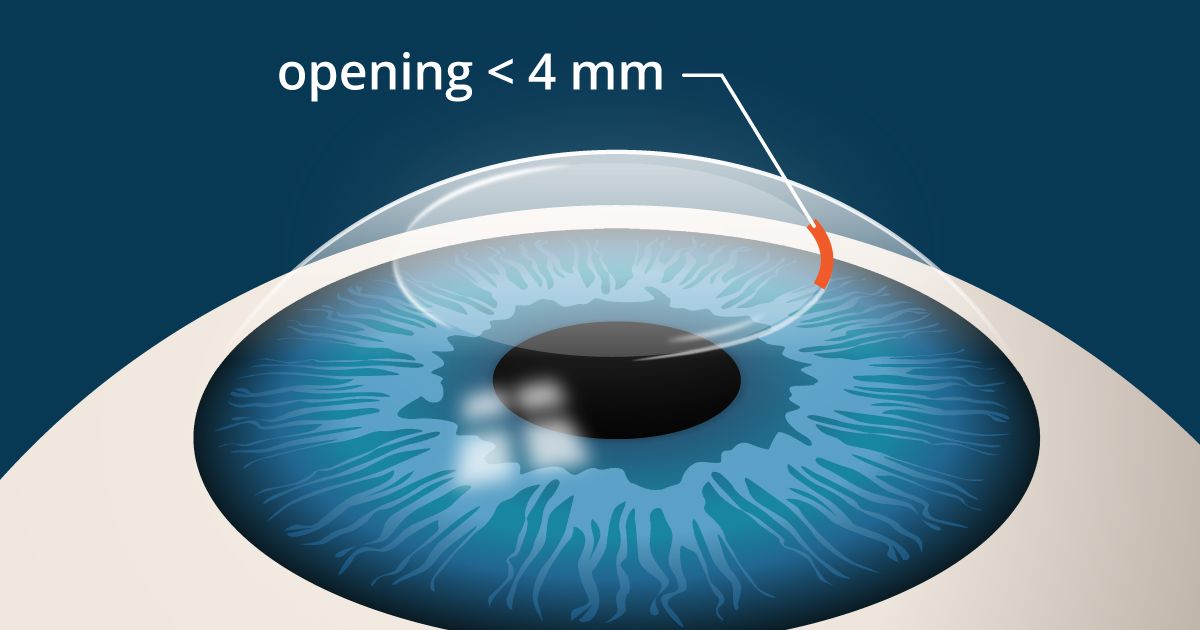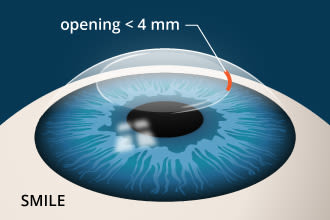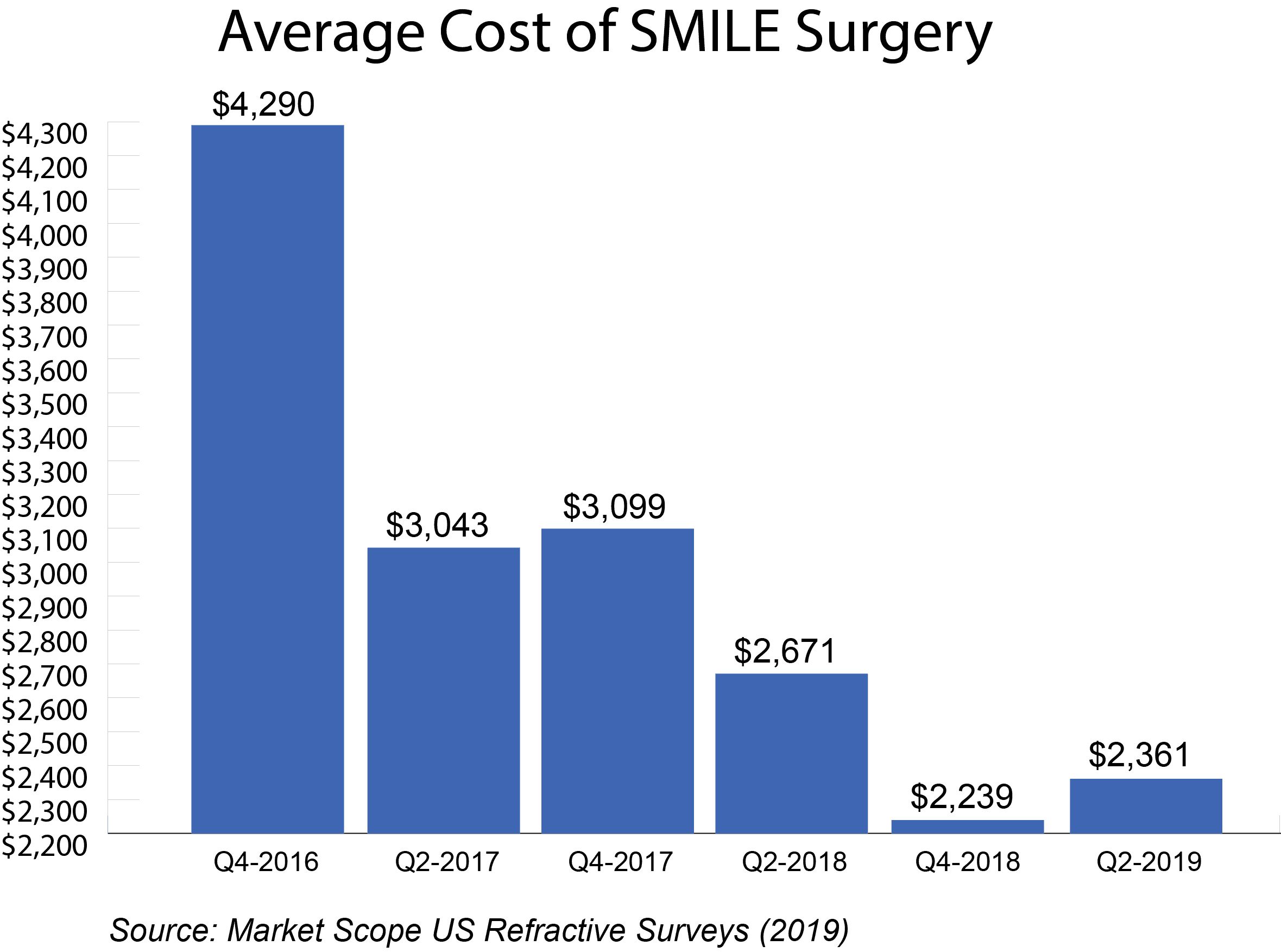SMILE laser eye surgery

What is SMILE eye surgery?
SMILE laser eye surgery is an alternative to LASIK surgery for the correction of nearsightedness. In some ways, SMILE eye surgery is similar to LASIK and it may offer advantages over LASIK for some patients. SMILE is an acronym for small incision lenticule extraction.

In LASIK, a large opening is required to enable the excimer laser to reshape the underlying cornea.

In SMILE, only a very small opening is needed (often less than 4 mm) to facilitate removal of the lenticule.
SMILE eye surgery is performed using a VisuMax femtosecond laser. This is proprietary technology of Carl Zeiss Meditec.
In the SMILE procedure, the surgeon uses a femtosecond laser to create a small, lens-shaped bit of tissue (lenticule) within the cornea. Then, with the same laser, a small arc-shaped incision is made in the surface of the cornea. The surgeon extracts the lenticule through this incision and discards it.
With the tiny lenticule removed, the shape of the cornea is altered, correcting nearsightedness. The corneal incision heals within a few days without stitches, and sharper vision occurs very quickly.
SMILE laser eye surgery can correct up to -10.00 diopters (D) of nearsightedness.
The best candidates for LASIK:
Are at least 22 years old
Have no more than -0.50 D of astigmatism
Have had no changes in their eyeglass prescription for at least 12 months
SMILE benefits and advantages
Research is showing SMILE produces virtually the same visual acuity as LASIK for the correction of nearsightedness, without the need to create a LASIK-style corneal flap.
In one study of 328 people who underwent the SMILE procedure, all but one had uncorrected visual acuity (UCVA) of 20/40 or better after surgery, and 88% had UCVA of 20/20 or better.
Also, it appears there may be less risk of dry eye symptoms after SMILE, compared with LASIK. SMILE does not require a large corneal flap like LASIK, so fewer corneal nerves are affected by the procedure. This may be why there is less risk of dry eyes after SMILE vs. LASIK.
The very small SMILE incision may also enable the cornea to maintain more of its strength and resistance to traumatic injuries after the procedure, compared with LASIK.
Also, research suggests SMILE eye surgery may be able to correct high amounts of nearsightedness than LASIK, with less risk of needing an enhancement procedure to attain a perfect correction.
Limitations of SMILE eye surgery
Are there any downsides to SMILE when compared with LASIK or PRK?
For starters, SMILE can only correct nearsightedness. LASIK and PRK can also correct farsightedness and astigmatism.
Also, LASIK and PRK can treat higher-order aberrations (HOAs) that can affect night vision, whereas SMILE cannot. In fact, SMILE might increase HOAs to some degree.
And if you have residual refractive error after SMILE eye surgery, PRK usually is used for the enhancement procedure.
SMILE eye surgery cost

Most U.S. refractive eye surgeons charge about the same price for SMILE eye surgery as they do for all-laser LASIK — somewhere in the range of $2,000 to $3,000 per eye.
Factors that contribute to the fee surgeons charge for SMILE include:
The surgeon's experience
The practice location
Whether follow-up exams and enhancements (if needed) are included
Is SMILE right for you?
If you are nearsighted and meet the other criteria stated above, you might be a good candidate for SMILE laser vision correction.
The next step is to have a comprehensive eye exam with your eye doctor and a consultation with a refractive surgeon.
SMILE: A brief guide. Zeiss. Accessed June 2021.
Comparison of visual results and higher-order aberrations after small incision lenticule extraction (SMILE): high myopia vs. mild to moderate myopia. BMC Ophthalmology. July 2017.
Comparative analysis of the clinical outcomes of SMILE and wavefront-guided LASIK in low and moderate myopia. Journal of Refractive Surgery. May 2017.
FDA approves VisuMax Femtosecond Laser to surgically treat nearsightedness. Press release issued by U.S. Food and Drug Administration. September 2016.
Mathematical model to compare the relative tensile strength of the cornea after PRK, LASIK, and small incision lenticule extraction. Journal of Refractive Surgery. July 2013.
Page published on Wednesday, February 27, 2019






